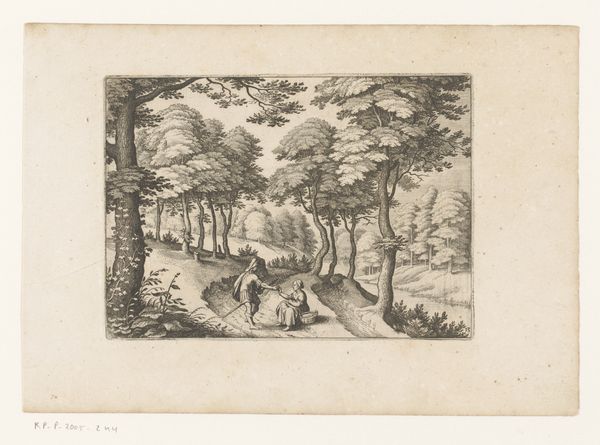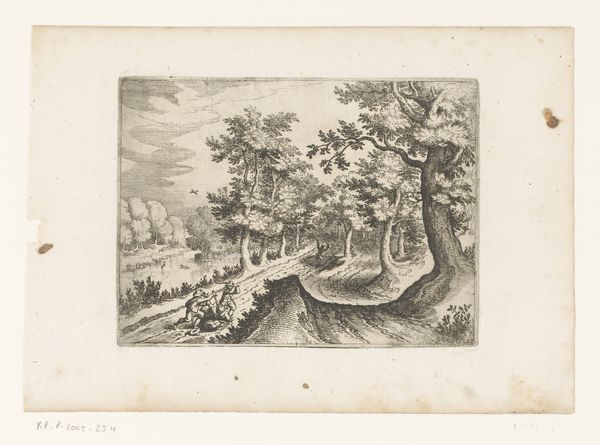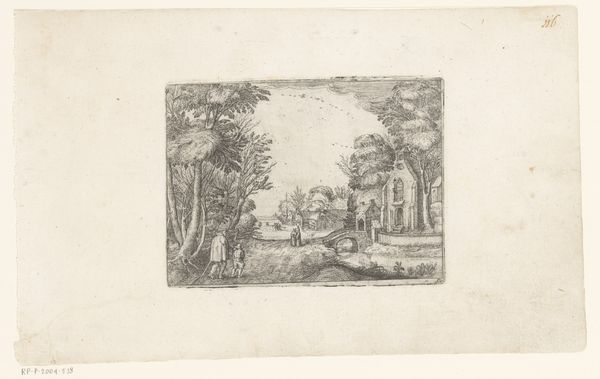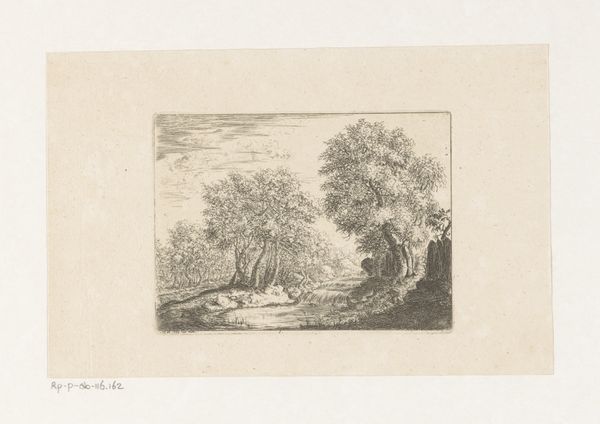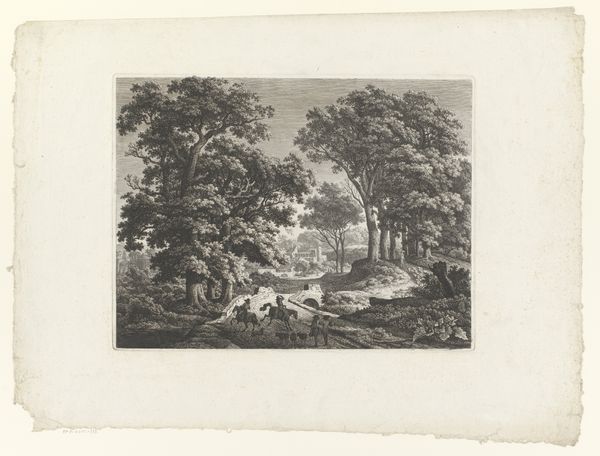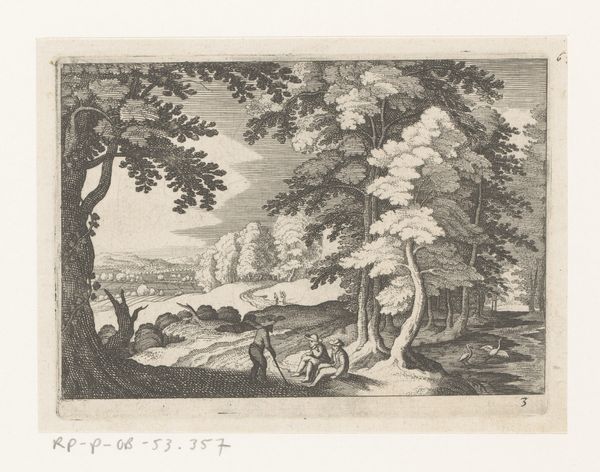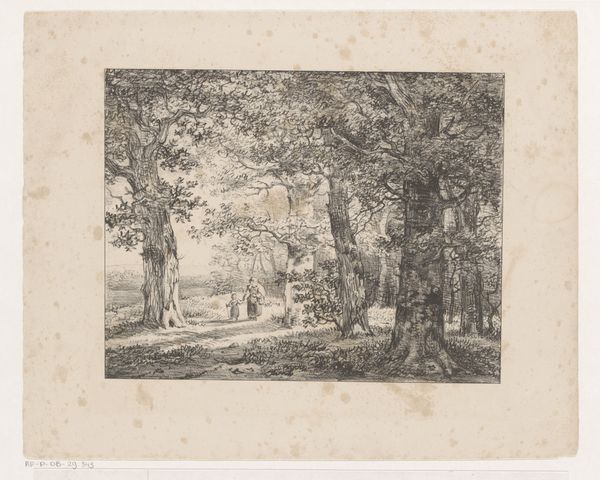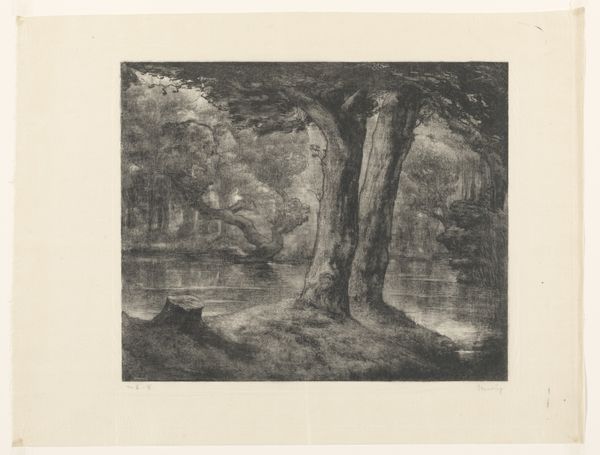
print, engraving
#
aged paper
#
toned paper
#
baroque
# print
#
landscape
#
figuration
#
chiaroscuro
#
line
#
genre-painting
#
history-painting
#
engraving
#
realism
Dimensions: height 120 mm, width 165 mm
Copyright: Rijks Museum: Open Domain
Curator: This engraving, rendered in the baroque style by Matthäus Merian I in 1620, is titled “Hagar met Ismaël en de engel,” currently residing at the Rijksmuseum. Editor: It’s striking. The figures almost seem incidental to the detailed woodland surrounding them. There is an atmosphere that precedes or looms over them. Curator: It depicts the Old Testament story of Hagar and her son Ishmael being expelled from Abraham's household. Lost in the wilderness, they are saved by an angel who shows them a well. Consider how this narrative of desperation and divine intervention would resonate. Editor: The positioning of Hagar, seemingly resigned on the ground while the angel rushes in… it feels loaded with contemporary resonances of gendered precarity and vulnerability when paired with notions of the promised "rescue". Is it truly emancipation, or another form of dependency? Curator: It’s interesting you mention that. The figure of the angel bears iconographic similarities to Mercury, messenger of the gods. Does that resonate? This image also has something to say about European perceptions of non-Europeans. What cultural lenses affect how we interpret that depiction today? Editor: Yes, precisely. The chiaroscuro employed dramatically emphasizes the intervention, almost as if spotlighting a pre-destined outcome rather than an active choice on Hagar’s part. How much agency does the picture actually grant her? Or are we just witnesses to a narrative written far above? Curator: Perhaps. The landscape, treated almost as a character, provides a backdrop rich with symbols too: trees rooted in faith, a distant vista signifying hope… the psychological interplay must have been powerful. Editor: Indeed. The work leaves us pondering whether the ‘promise’ embedded in this scene, both divinely and artistically presented, serves justice for those written into and out of such narratives, historically, symbolically, now. Curator: The visual weight that Hagar, Ishmael and the angel carry over time speaks volumes about how we grapple with interpretations of religious texts today. Thank you for highlighting this fascinating artwork, this makes it resonate on a personal and communal level. Editor: Thank you. The power of art lies in how it questions as much as it represents.
Comments
No comments
Be the first to comment and join the conversation on the ultimate creative platform.
